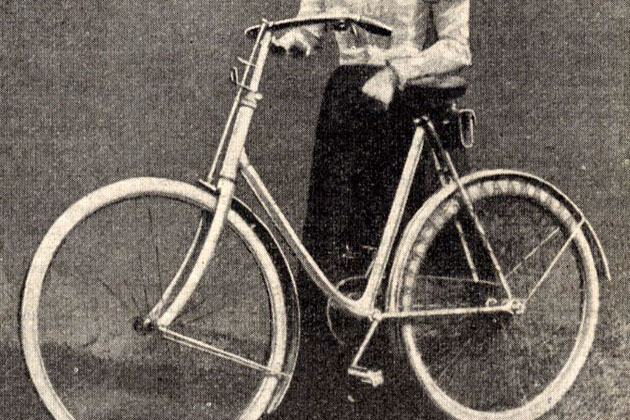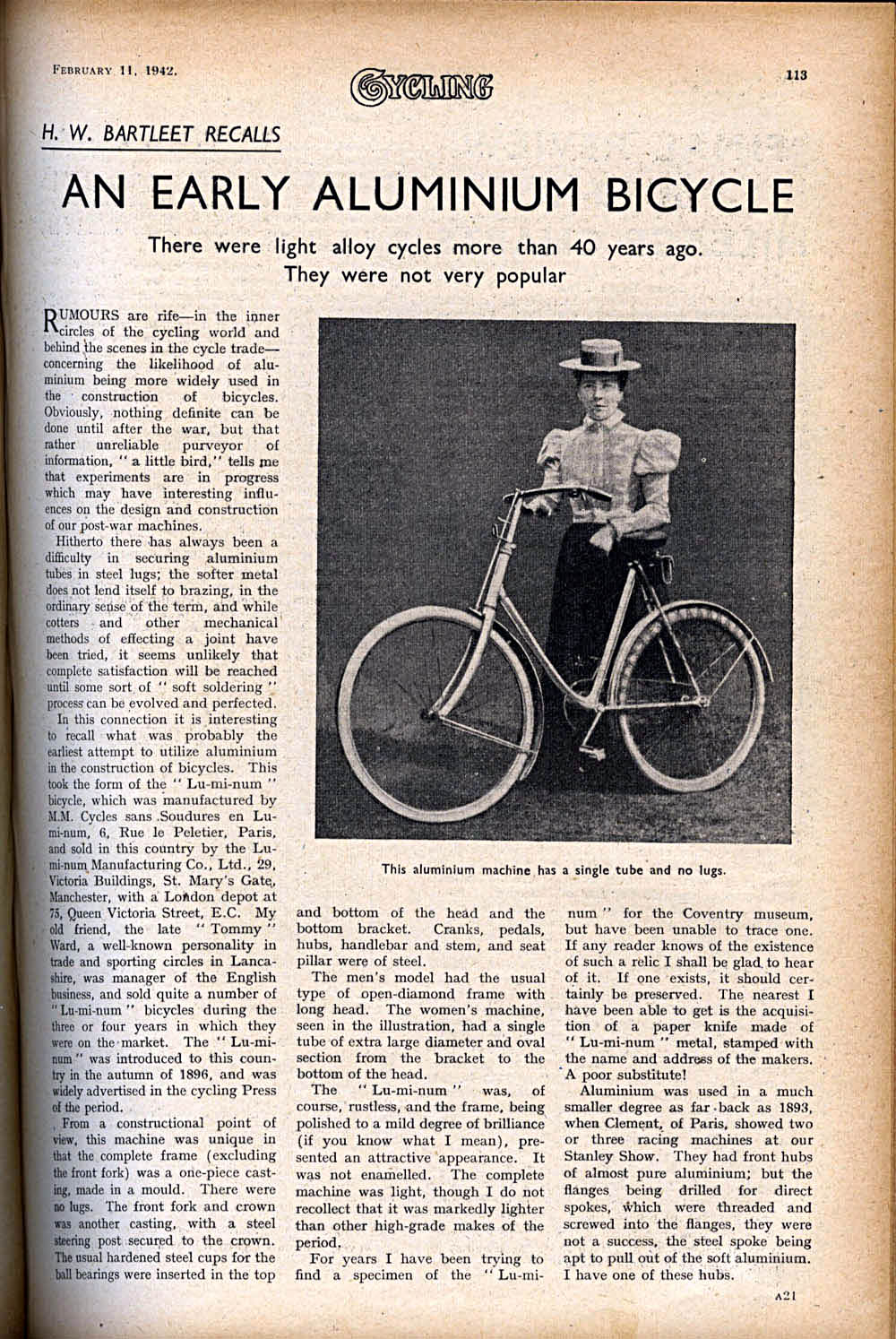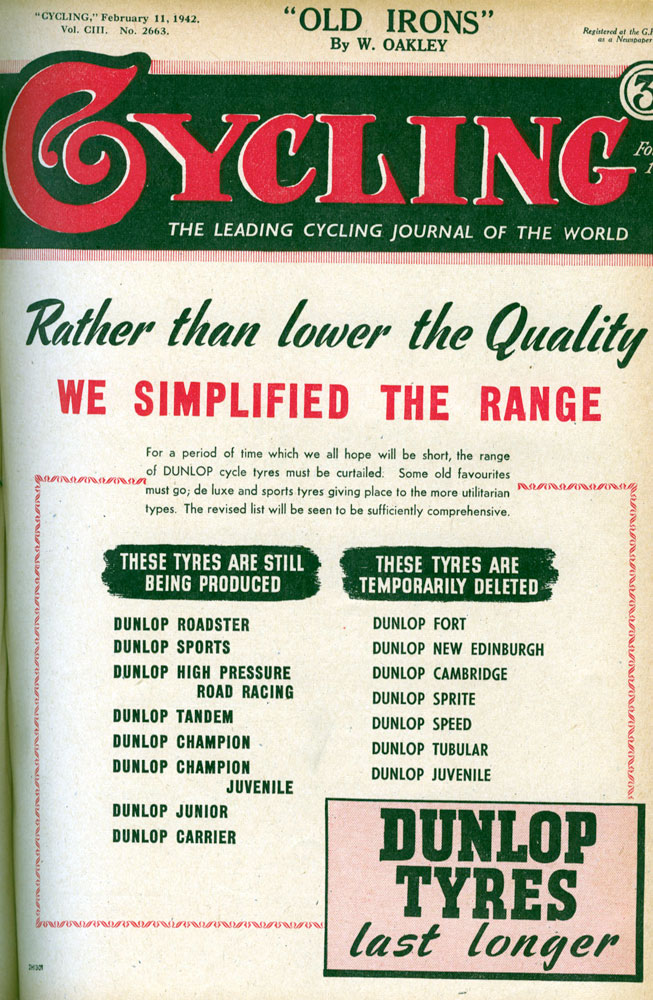'Aluminium bikes are the future'... in 1942
We delve into the Cycling Weekly magazine archive and discover that the current resurgence of aluminium in bike frames is really nothing new at all

Aluminium bike, 1800s style

Aluminium as a frame material for road bikes is currently enjoying a comeback after recent domination by carbon-fibre. Aluminium's inherent strength, lightness and rust resistance means it has attractive aspects for making bike frames and components.
What held back aluminium in the old days was a lack of welding technology to form a viable frame out of the raw materials, and steel remained the material of choice for most of the 20th Century.
Amazingly, though, and as the Cycling Weekly archives will confirm, aluminium was first used over 120 years ago, only to fall out of favour and come back in again.
Back in the February 11 1942 issue of Cycling magazine - the forerunner of Cycling Weekly - H.W. Bartleet wrote of the impending trend for aluminium bikes.
>>> Carbon beware: are aluminium frames making a comeback?
"Rumours are rife in the inner circles of the cycling world and behind the scenes in the cycle trade – concerning the likelihood of aluminium being more widely used in the construction of bicycles," Bartleet wrote.

As he wrote in the article, the use of aluminium in bikes actually stretched back to the late 1800s, when a company produced bikes under the brand name 'Lu-mi-num'. These featured a one-piece cast frame so that it avoided using lugs to join the tubes together. It's a frame construction technique that we'd recognise today as being monocoque.
The latest race content, interviews, features, reviews and expert buying guides, direct to your inbox!
"From a constructional point of view, the machine was unique in that the complete frame (excluding the front fork) was a one-piece casting, made in a mould," said Bartleet.
"The Lu-mi-num was, of course, rustless, and the frame, being polished to a mild degree of brilliance presented an attractive appearance. The complete machine was light," he noted.
>>> Bike test: Aluminium, steel, carbon or titanium?
The Second World War meant that the production of aluminium bikes was put on hold as the country's metal found its way into armaments and vehicles for the war effort. But Bartleet was absolutely right that aluminium did, eventually, become a popular frame material. And that appeal remains to this day.
Cycling Weekly is celebrating its 125th anniversary this year. We will be running a series of archive articles from old issues as a celebration of the magazine's long history.


Nigel Wynn worked as associate editor on CyclingWeekly.com, he worked almost single-handedly on the Cycling Weekly website in its early days. His passion for cycling, his writing and his creativity, as well as his hard work and dedication, were the original driving force behind the website’s success. Without him, CyclingWeekly.com would certainly not exist on the size and scale that it enjoys today. Nigel sadly passed away, following a brave battle with a cancer-related illness, in 2018. He was a highly valued colleague, and more importantly, an exceptional person to work with - his presence is sorely missed.